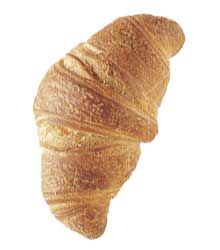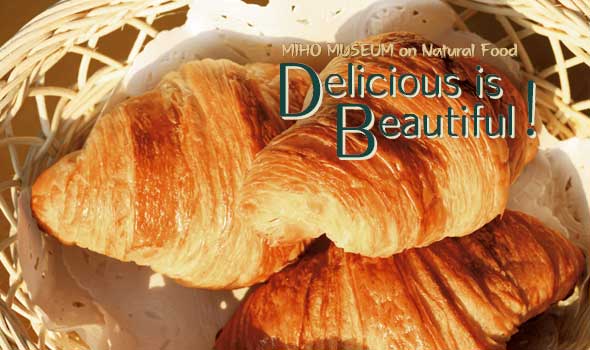

We serve our guests with dishes made of only with natural ingredients that use no additives.
| Restaurant Peach Valley Café Pine View |
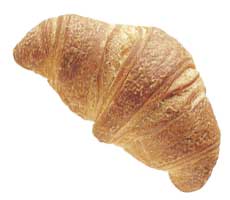

Flaky layers melt in your mouth. Creamy butter and wholesome
flour compliment each other in a tasty fusion. A crispy, savory outer
layer with light inner layers create an indescribable flavor and
sweetness that fills your entire palate, which is crowned with the soft,
gentle aroma of flour.
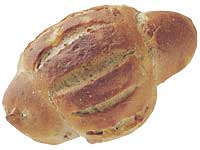
Our fragrant and delicious breads include soft boules—wrapped in a
subtle strawberry fragrance and sweetness that create a sublime,
delicate flavor—French bread, English bread, pan au levain, and
anpan
(bread filled with red-bean paste). Wouldn’t you like to peek into a
bakery that makes breads like these?
A square piece of butter is wrapped within the soft,
airy dough. The electric mixer begins to knead the dough, and one
wonders which parts have been stretched out, for after it is kneaded
three or four times, there is suddenly twice as much as before. The
corners are aligned and folded in three and again kneaded. The bakers
then handle the dough tenderly and, carefully moving their fingertips,
they gently fold in the butter into the croissant.

The soft boules starter begins to double. The stretched out dough looks like a freshly made rice cake, which is cut into uniform pieces and almost magically rolled into balls. Round and soft, they are pleasant to the touch. The cut edge is coiled into the ball and again made to rise.
The soft boules starter begins to double. The stretched out dough looks like a freshly made rice cake, which is cut into uniform pieces and almost magically rolled into balls. Round and soft, they are pleasant to the touch. The cut edge is coiled into the ball and again made to rise.
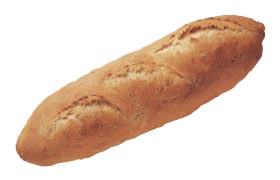
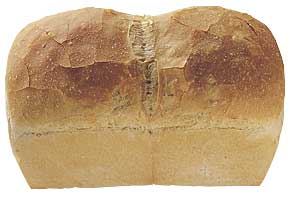
At MIHO
MUSEUM’s bakery, our bread makers lovingly handle the bread throughout
the entire baking process. After all, they make their own starter.
Originally, bread starter is a mixture of flour and a leavening agent.
Our leavening agent is not the usual commercial yeast, but a natural one
made of airborne bacteria culture from grapes, tangerines, and
strawberries, which increases quickly in sugar water. The remarkable
skill of the bread maker lies in cultivating this leavening agent. That
is why if the leaven is not handled correctly, the bread will not raise
and will go sour. Even if it is baked, it falls flat. After several
trials and errors, however, one day, an indescribably delectable bread
suddenly comes out of the oven.
The flour used in our bread comes from Canada, where
it is processed from organic wheat grown in fields that have not used
any chemical or agricultural fertilizers since 1978. The process to make
this wheat into flour is very labor intensive, for a large mill is
required to grind the wheat. Most millers asked us if they could mix in
other grains when processing our flour, because we had such a small
amount of wheat. We would not accept this, so many companies refused our
request. But finally, after a long search, we found a miller that was
willing to use only our organic wheat and to thoroughly clean their
equipment before processing our flour.
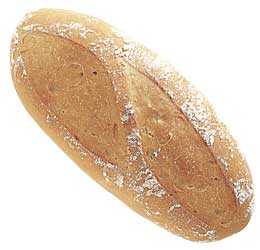
The butter for our croissants comes from Kumamoto
Prefecture. The cows at this dairy farm eat only fodder that is free of
chemical pesticides and fertilizers. The flavor of our butter, which is
free of additives, is pure and simple, but it changes depending on the
temperature. This is because the cows' physical condition also changes
depending on the season.
We have one more secret ingredient... Our bread makers
say, “Our feelings directly affect the taste of the bread.” What does
that mean? “It means that we have to create a nurturing environment not
just when we are making the bread, but before we start as well, if
someone feels frustrated, it is no good.”

Hence, the mood during the leavening process, the condition of the cows, and the season can change the flavor of our bread, because all these variables are dynamic and changing. Under these conditions, our bread makers aim to bake the best bread for our museum visitors every day.
Hence, the mood during the leavening process, the condition of the cows, and the season can change the flavor of our bread, because all these variables are dynamic and changing. Under these conditions, our bread makers aim to bake the best bread for our museum visitors every day.
